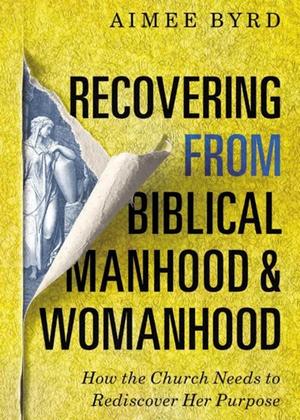A Thousand Tears
- Details
- Written by: Chris Appleby

A Thousand Tears is a project to collect stories of womens experience in seeking to serve God with the full range of gifts they've been given.
To contribute to this project you can submit your story here.
LAMENT FOR EASTER SUNDAY
- Details
- Written by: Anon
LAMENT FOR EASTER SUNDAY
‘Just some women
A full church on Easter Sunday. Reading: John 19:38-20:20
The preacher said, ‘Jesus appeared after His crucifixion on eleven recorded occasions to multiple different groups of people. To just some women, initially, and then to many disciples, sometimes in groups, sometimes in very large groups, and on one occasion to a group of well over 500 people’.
The preacher could have meant or could have said, ‘He appeared first to Mary Magdalene and other women with her.’
But he didn’t say that, he said, ‘just some women’.
The preacher could have meant or could have said, ‘He appeared first to His female disciples, Mary Magdalene, Mary the mother of James and Joseph, Salome and other women.’
But he didn’t say that, he said, ‘just some women’.
THE YELLOW WALLPAPER: REFLECTING ON AIMEE BYRD’S RECOVERING FROM BIBLICAL MANHOOD AND WOMANHOOD
- Details
- Written by: Bree Mills
 THE YELLOW WALLPAPER: REFLECTING ON AIMEE BYRD’S RECOVERING FROM BIBLICAL MANHOOD AND WOMANHOOD
THE YELLOW WALLPAPER: REFLECTING ON AIMEE BYRD’S RECOVERING FROM BIBLICAL MANHOOD AND WOMANHOOD
by Bree Mills | November 01, 2020
This article originally appeared in Priscilla Papers, CBE International’s academic journal, on November 1, 2020. It is re-printed with permission.
After reading the introduction to Aimee Byrd's Recovering from Biblical Manhood and Womanhood,1 I admit I put her book down to go and read The Yellow Wallpaper, a book that sparked Byrd's thinking and prompted her to write. Only then did I return to reading Byrd’s book.
The Yellow Wallpaper is a profoundly disturbing novella by American social reformer and feminist, Charlotte Perkins Gilman, penned in 1890 and published in 1892.2 It is the semi-autobiographical story of a woman suffering from post-partum depression, in an era when this disorder was misunderstood. The woman is prescribed rest therapy, a complete removal of any mental, social, or physical activity. She is placed in a room with yellow wallpaper and bars on the windows while she is cared for by her husband and her sister-in-law, Jenny. The woman speaks well of her husband and his care for her, and while the readers can see her participation in her own oppression, the narrator cannot. She begins to see another woman in the wallpaper, desiring to break free, and over time tears at the wallpaper to free the woman trapped within. It ends in her husband finding her raving mad in the room, having freed the woman from the wallpaper, and the voice of the narrator shifts to become the voice from behind the wallpaper. The two women are one, and she has freed herself from the confinement in which she and her husband both participated.
The Gospel According to Eve: A History of Women's Interpretation
- Details
- Written by: Barbara Deutschmann
 The Gospel According to Eve:
The Gospel According to Eve:
A History of Women's Interpretation
IVP Academic (29 October 2019)
by Amanda Benckhuysen
Reviewed by Barbara Deutschmann
We often hear that the push for women's inclusion in all aspects of church ministry is a response to modern "feminism". This book puts paid to that notion. Amanda Benckhuysen has researched the many women from the Middle Ages to the present day who found in the first few chapters of Genesis inspiration and resources for countering patriarchy. They had to "tell it slant" (to quote Emily Dickenson), working against the pull of strong forces that assigned them their roles and realms.
The author sets the context by outlining the questions and silences in the story of Eden. Why did Eve eat the fruit? Why did Adam eat? And was God's response a description of the consequences of their transgression or prescription of their punishment? These gaps have been closed by traditional interpreters, replacing ambiguity with certainty. Reflected in Philo’s work in the first century, and well-settled by the Middle Ages, the female gender was firmly associated with sin. But Genesis 1–4 has played a part not only in the condemnation of women but also in the recovery of her stature, as women brought fresh eyes and great deal of courage to its analysis.
Read more: The Gospel According to Eve: A History of Women's Interpretation
How I Changed My Mind About Women in Leadership
- Details
- Written by: Lisa Baumert
 How I Changed My Mind About Women in Leadership
How I Changed My Mind About Women in Leadership
by Alan F Johnson
Zondervan Academic 2010
Alan F. Johnson’s compilation of narratives entitled How I Changed My Mind About Women in Leadership: Compelling Stories from Prominent Evangelicals is a particularly fresh, honest, and persuasive resource in the growing collection of books on gender equality and women in leadership. The recognizable evangelicals in this book speak humbly and clearly about how their theological convictions and understanding of Scripture, with reference to women in leadership, were transformed through personal experience. While maintaining a high view of the authority of the Bible and an allegiance to their evangelical traditions, they convincingly describe how the gospel message affirms gender equality.
Why I Believe in Preaching to Women
- Details
- Written by: Erica Hamence

I can remember the first time I heard the word "vagina" spoken on stage at church because, as soon as it happened, one of my trainees turned to me with wonder in her eyes and whispered to me, reflecting my own thoughts, "That's the first time I've ever heard ‘vagina’ in church.’
It was during a presentation by one of our members, a prominent doctor, who was preparing to deliver medical supplies (including various period-related apparatuses) as part of an overseas mission trip. It was mentioned matter-of-factly, as it should have been, from a medical professional speaking about medical matters, but at the same time, it felt radical. Vaginas! Periods! In church!
This, this contrast between the ordinary things of women’s lives, and the relative rarity of hearing about them from the front of church, is part of why I believe in preaching to women.
I am ministering in a context in which I often get asked why I believe in preaching to men, but I never get asked why I believe in preaching to women. I want to make an argument for that here. Here is what I mean by that: I mean preaching that notices and calls attention to the experiences of women in the text, and the experiences of women that the text speaks to.
An Egalitarian Marriage
- Details
- Written by: Julie-ann Laird

One morning, 19 years ago, I frantically rang Andrew as I stepped out of the lift at Latrobe Uni. "Andrew, are you still here? I think the baby's coming." Andrew had driven me to work that day, as I was 40 weeks pregnant with our 4th child (although not sure why I went to work!!). We both worked for Latrobe Christian Union. I worked one day a week and Andrew 4 days and this was my day to work. He still had our other 3 kids in the car and thankfully hadn't left yet, so he raced me into the hospital. 2.5 hours later we met our youngest son Bradman. Having a fourth child turned out to be a turning point in our marriage.
I think our marriage looks like many other marriages. We bring our personalities, our strengths, our own personal faith and our wholehearted love into a marriage, and this is impacted by our family of origin, our sinfulness, and all the complexities of us as human beings. Andrew married a capable, strong and driven woman and I married a reliable, compassionate, steady and funny man. I knew, as soon as I met him, that he was the sort of guy I wanted to marry and we could serve God well together! I wanted an equal. I didn't want our marriage to be "she or he wears the pants". I wanted it to be us bringing our best before God and into the marriage.
Initially Andrew and I didn't really have a theological stance on men and women in ministry. We just knew we wanted to serve God in any way we could! Over time our views strengthened to be more egalitarian as we read the Bible, articles and books.
